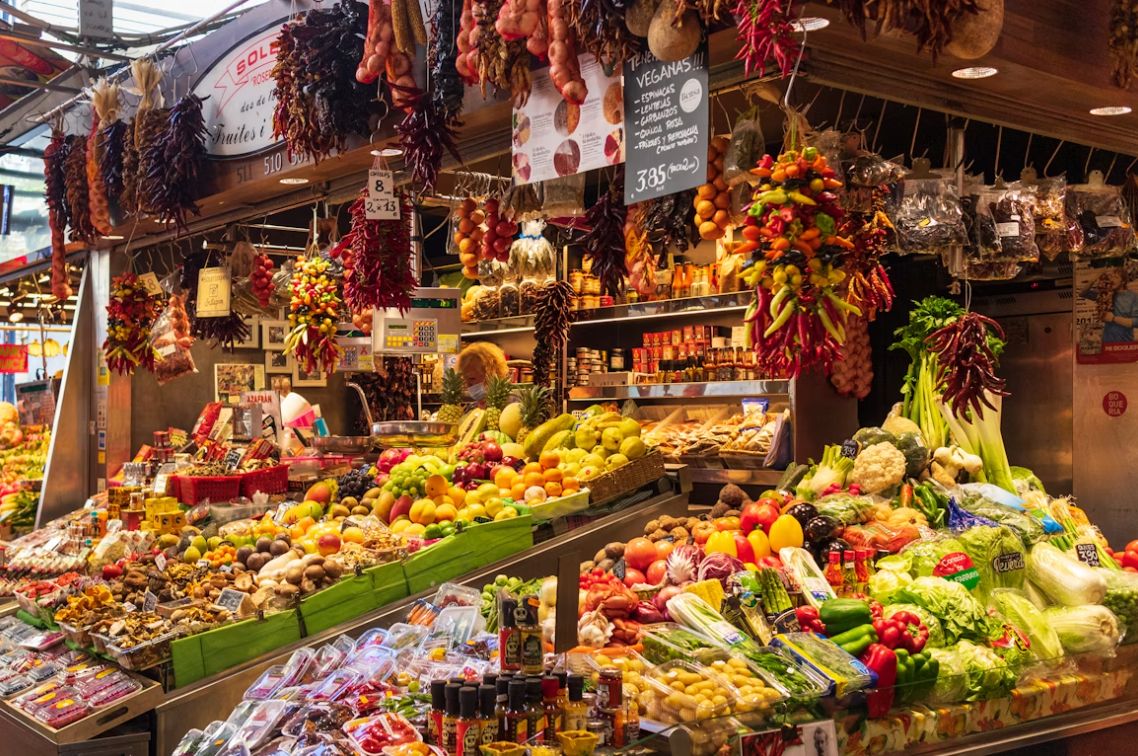Planning your next culinary adventure, but not sure where to go? Croatia’s food scene is one of Europe’s best-kept secrets. This small country offers an incredible variety, from fresh Adriatic seafood to hearty mountain stews. Its special location between Mediterranean and Central European cultures creates flavors found nowhere else.
1.Hearty Meat Dishes for Comfort Food Lovers
Inland Croatia serves food that sticks to your ribs. Peka represents the ultimate comfort food – this traditional method cooks meat and vegetables under a bell-shaped lid covered with hot coals for hours, producing incredibly tender results.
Game meat appears frequently in mountain regions. Wild boar, venison, and rabbit get prepared in rich stews or roasted with seasonal vegetables. Zagreb’s markets sell various sausages and cured meats that rival anything you’d find in Austria or Germany.
2.Fresh Adriatic Seafood at Its Finest
The Adriatic Sea is a treasure trove of fresh and flavorful seafood. Croatia’s coastline stretches over 1,100 miles with more than 1,000 islands, including Hvar, where luxury Hvar villas offer access to some of the finest coastal dining experiences. Guests staying in villas can easily enjoy waterfront restaurants serving the day’s freshest catch. Fishing boats deliver catches directly to coastal restaurants daily.
The preparation stays simple to let the seafood shine. Grilled fish arrives with just olive oil, garlic, and lemon. Traditional dishes like brudet (fish stew) and black risotto showcase local cooking methods passed down for generations.
3.Mediterranean Meets Central European Flavors
Croatian food tells the story of empires. Italian rule influenced the coast for centuries, which
explains the pasta, risotto, and pizza-like soparnik flatbread. Venice left its mark on Dalmatian
cuisine with seafood preparations and wine culture.
Move north and you’ll taste Austria’s influence in schnitzel-style dishes and elaborate cakes. Hungarian paprika dominates eastern Croatian cooking, while Turkish coffee culture persists from Ottoman times. These influences don’t just coexist – they blend into dishes that feel both familiar and completely new.
4.Regional Diversity Creates Unique Cuisines
Croatia’s geography shapes three completely different food worlds. The coastal regions serve Mediterranean-style dishes with olive oil, fresh fish, and sun-ripened vegetables. Travel inland to Zagreb and you’ll find butter-based sauces, rich stews, and Central European pastries.
Head east to Slavonia and the menu shifts again. This agricultural heartland produces spicy sausages, paprika-heavy dishes, and some of Croatia’s best wines.
Regional specialties to try:
● Coastal: Black risotto, grilled fish, octopus salad
● Inland: Štrukli (cheese pastry), turkey with mlinci
● Eastern: Kulen (spicy sausage), fiš paprikaš (fish stew)
5.Seasonal Ingredients Drive the Menu
Croatian restaurants work with what’s available now, not what’s imported. Spring brings wild asparagus in omelets and risottos. Summer markets overflow with tomatoes, peppers, and eggplants. Autumn delivers mushrooms, Croatian truffles, and game meat.
Winter comfort foods include stuffed cabbage rolls (sarma) and bean stews. For those inspired to recreate Croatian flavors at home, many of these seasonal dishes can be adapted into easy weeknight meals with simplified techniques.
Seasonal highlights:
● Spring: Wild asparagus, fresh peas, lamb
● Summer: Tomatoes, figs, grilled fish
● Autumn: Truffles, mushrooms, new wine
● Winter: Cabbage, root vegetables, cured meats
6.Farm-to-Table Is the Standard
Croatians don’t call it “farm-to-table” – they just call it lunch. Most restaurants source ingredients from local suppliers, often family farms they’ve worked with for decades. Green markets (pazar) operate in every town, where farmers sell directly to consumers and chefs.
Island restaurants often grow their own herbs and vegetables. Coastal konobas are often family- run, with relatives who fish to supply seafood straight from local waters. This commitment to local sourcing is not a modern trend but a long-standing part of Croatian food culture.
7.Hidden Gems for Vegetarians and Vegans
Croatian cuisine offers excellent vegetable dishes once you know where to look. Blitva (Swiss chard with potatoes and garlic) appears on nearly every menu. Coastal regions prepare stuffed vegetables with rice instead of meat.
Soparnik, a traditional flatbread filled with Swiss chard from the Dalmatian hinterland, contains no animal products. Spring brings maneštra, a thick vegetable stew that varies by region but always showcases seasonal produce.
Vegetarian-friendly dishes:
● Đuveč: Baked vegetable casserole
● Fritule: Sweet doughnuts for dessert
● Various cheese pastries in inland regions
8.Traditional Cooking Methods Preserved
Modern kitchens haven’t replaced traditional Croatian cooking techniques. Peka cooking still happens in homes and restaurants because no other method produces the same results. Outdoor grilling reaches an art form where families gather for ražanj (spit-roasting).
Handmade pasta is still common, especially in Istria, where fuži and pljukanci are rolled by hand every day. Smoking and curing meats follow time-honored recipes with no shortcuts. This dedication to tradition preserves the authentic flavors that define Croatian cuisine.
9.Wine and Olive Oil Traditions
Croatia grows over 130 indigenous grape varieties you won’t find anywhere else. Plavac Mali produces powerful reds on the Dalmatian coast. Malvazija Istarska creates crisp whites perfect with seafood.
Small family wineries dominate production, many of them part of the Wine Association. Istrian olive oils regularly win international awards for quality and flavor complexity. Both wine and olive oil traditions complement the food perfectly, with locals pairing regional wines with regional dishes instinctively.
Notable wine regions:
● Pelješac Peninsula: Dingač and Postup wines
● Istria: Malvazija whites and Teran reds
● Korčula: Grk and Pošip white wines
Conclusion
Croatia delivers what food lovers actually want: fresh ingredients, authentic preparations, and regional variety. The blend of Mediterranean and Central European influences creates unique flavors, while traditional methods preserve centuries of culinary wisdom. From Adriatic seafood to mountain stews, Croatia offers genuine food experiences worth traveling for.

